Top 10 Best Bizarre Sports You’ve Never Heard Of
There is no denying that there are many interesting sports such as football, badminton, athletics, swimming, etc. Each sport has different attractive features. ... read more...But surely with the list of top 10 best bizarre sports you've never heard of will surprise and delight you.
-
Camel Wrestling ranks first in the list of the best bizarre sports you've never heard of. Some sports are very much a product of their time and place of origin. Nobody in Idaho was going to invent surfing, and no one in Australia was going to invent snowboarding. So the western parts of Turkey could only come up with a limited number of sports based on what was available for people to experiment with. That's how camel wrestling came to be. Surprisingly, this sport has a solid 2,400-year history, and the name is not metaphorical or deceptive in any way. In 2011, 20,000 people turned out to watch camel wrestling in Selcuk, demonstrating how popular this unusual sport is.
Camels are naturally aggressive when they believe they are about to mate and there are other males around to compete with. Males are exposed to females in heat and then placed in an arena together in the sport. They're wearing gear to keep them from biting each other, but otherwise it's just two male camels squabbling over a female. The victor either knocks the other camel down or causes it to flee. In terms of cultural significance and tradition, it has been compared to Spanish bullfighting.
Just as intriguing as the sport is the fact that no one involved benefits from it. The camels are not allowed to breed, and the human owners do not profit from it. It's been dubbed a "rich man's sport" because it's expensive and only provides fleeting entertainment rewards. The 2011 tournament winner received a machine-made rug.Location: Aegean region of Turkey
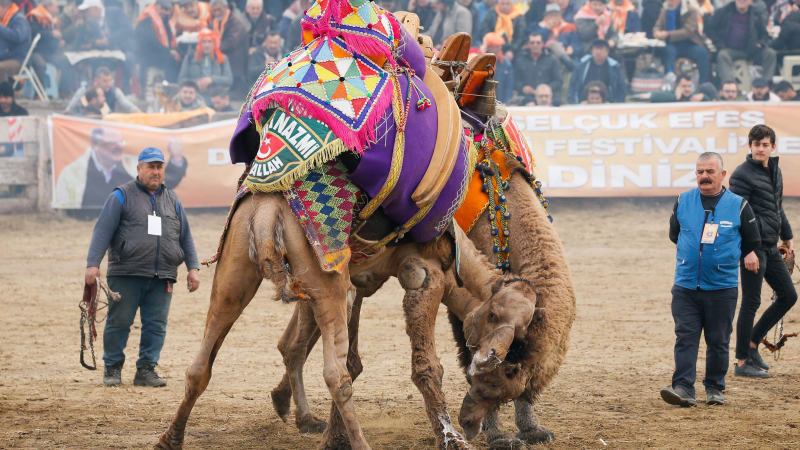
exoticspy.com 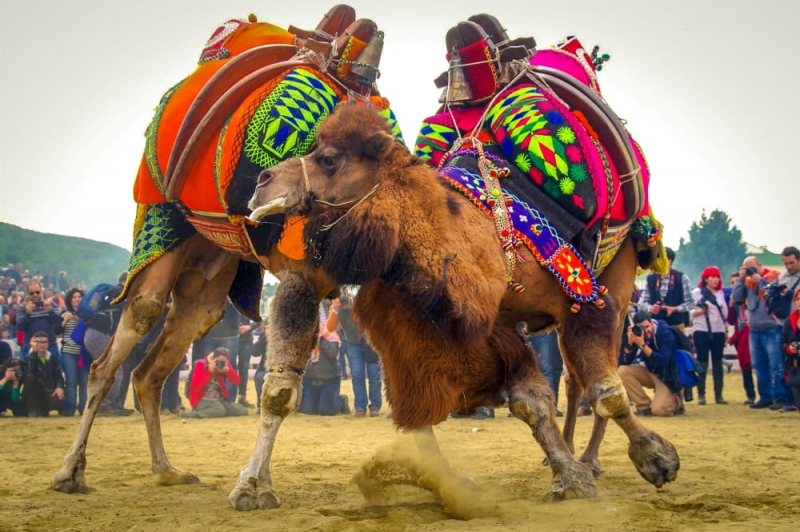
hurriyetdailynews.com -
There will be a lot of people who want to watch bokdrol spoeg and even fewer who want to participate. This South African sport, also known as "kudu dung spitting," requires you to take a pellet of poop from a kudu, which is a type of antelope, and then put it in your mouth. Then you spit the turd as far as you can. Whoever spits it the furthest wins, though it's difficult to say who wins when everyone has a mouthful of poop.
Despite the fact that the kudu is a large animal, its feces resembles that of a rabbit. Nothing but little piles of round pellets. It's difficult to say what prompted the first person to try the sport. It's very similar to spitting out watermelon seeds, and it's entirely possible that it originated when someone put one in their mouth thinking it was actual food and then spit it out after realizing what it was, impressing a friend with the distance.
Location: South Africa
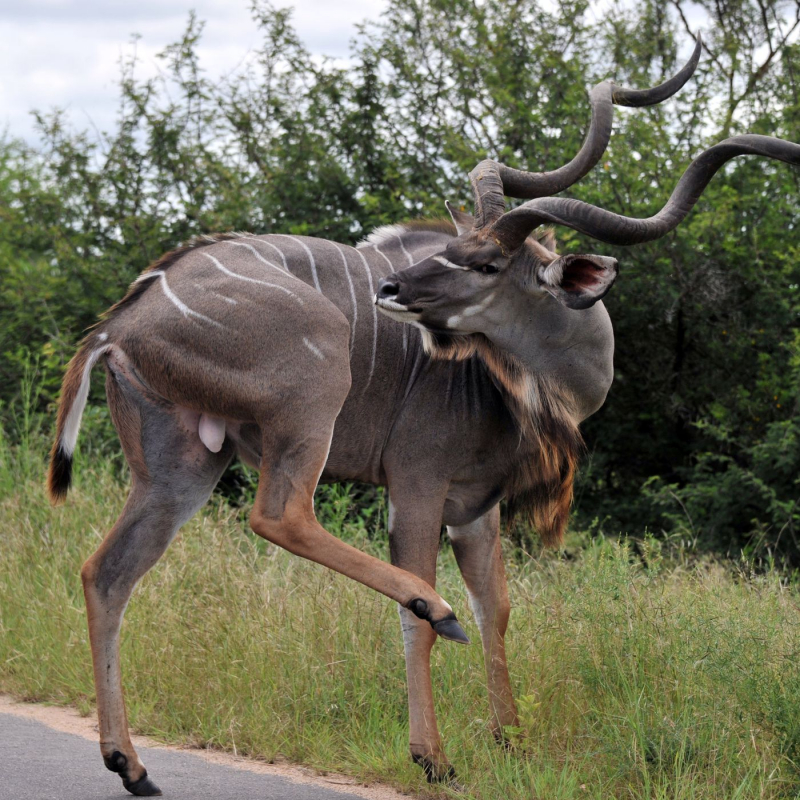
ripleys.com 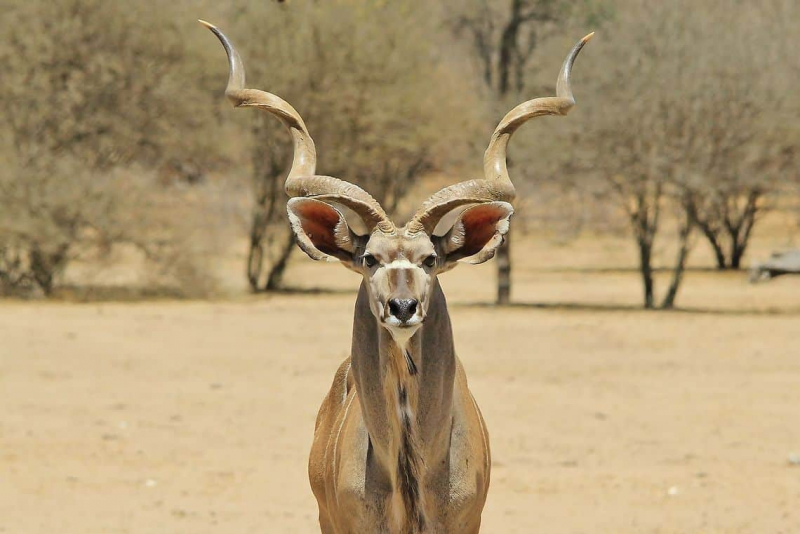
historycollection.com -
Death diving is a type of extreme diving from great heights that involves jumping with stretched arms and landing in a canon ball or shrimp position. The International Dds Federation manages competitions, including the official Dds qualification league (Dds Challenge) and the Dds World Championship. The World Championship is held from a 10-15 meter high platform. Classic and Freestyle competitions are held separately. Competitors in the Classic event must fly horizontally with their arms and legs extended until they hit the water, with no rotations.
To avoid serious injury, competitors curl into a fetal position just before entering the water and land first with their feet and hands or knees and elbows; dives are judged on speed, air time, complexity, how long the diver holds the original pose, the closing, and the splash. The name comes from the fact that competitors in Freestyle Dds perform various tricks while flying, including rotations and flips. The Norwegian Swimming Federation does not recognize the sport as a discipline. The International Døds Federation was founded January 1st 2012. The current world record in height is 31,5 meters and is held by three competing athletes: Ken Stornes, Tore Våge and Côme Girardot. In the women's class the record is at 20,4 meters and is set by Norwegian Asbjørg Nesje.
Location: Norway
-
Wok Racing is an ice sport in which participants race down bobsled tracks while sitting on round-bottomed Chinese woks (modified woks). Competitions are held for one-person woksleds as well as four-person woksleds, in which four woks are placed on a sled. Speeds in one-person races can reach 100 km per hour, and 120 km in four-person events. Wok racing began in 2003 in Winterberg, Germany, as part of a TV show hosted by German TV host and entertainer Stefan Raab.
The first official World Wok Racing Championship was held in November 2003, and its immediate success led to the second event on March 4, 2004, in Innsbruck, Austria, and the championships are now held annually. In the races that are directly imported from China, ordinary round-bottomed Chinese woks are typically used, but some modifications are made. To prevent injuries, the bottoms of the woks are reinforced with an epoxy filling, and the edges are coated with polyurethane foam.
Location: Winterberg, Germany
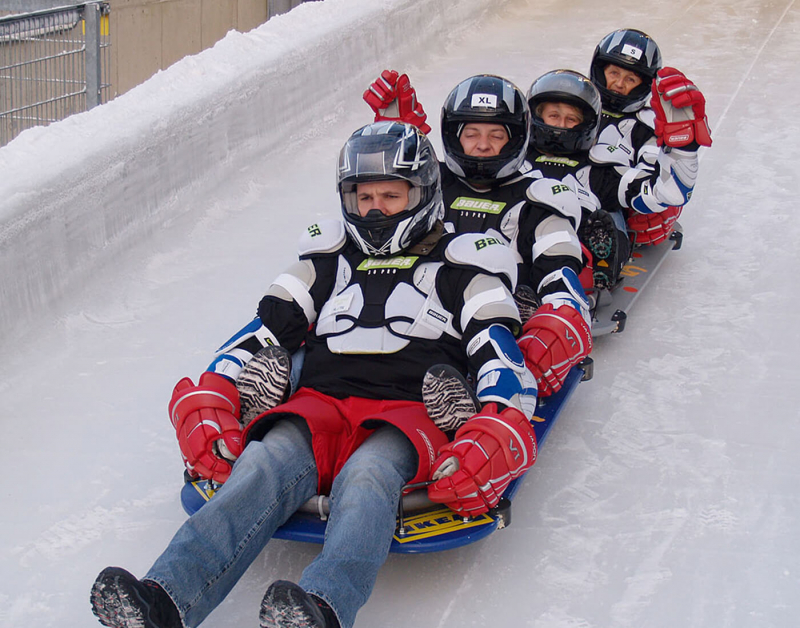
sportsmatik.com -
Spinning combines drifting and acrobatics ranks 5th in the list of the best bizarre sports you've never heard of. If you enjoy auto racing but find that most races lack variety, spinning may be the sport for you. It is popular in South Africa and is known as the "most reckless sport," as it combines the best of drifting with acrobatics in a way that makes it appear as if someone will die at any moment. While a car is set spinning (hence the name) in a parking lot doing donuts and burnouts and so on, the driver may open the door or simply hang out the window, possibly upside down or in some other death-defying position, while the car is basically left to control itself.
The sport was born in an unlikely manner, much like the way it is played. It evolved from the practice of gangsters stealing cars and then spinning to show off what they'd stolen, becoming more glamorous and grandiose over time. According to another story, it was created by a guy who thought hanging upside down out of a moving car would be cool. Companies such as Red Bull host formal competitions these days.
Location: South Africa

nytimes.com 
autotent.net -
The ear pull is a traditional Inuit game that tests competitors' pain tolerance. Two competitors sit facing each other in the ear pull, their legs straddled and interlocked. A two-foot-long string loop, similar to thick, waxed dental floss, is looped behind their ears, connecting right ear to right ear or left ear to left ear. The competitors then pull on the opposing ear with their own ear until the cord snaps or one player gives up due to pain. Due to safety concerns and spectator squeamishness, the game has been omitted from some Arctic sports competitions; the event can cause bleeding, and competitors occasionally require stitches.
A related competition is the ear weight. The goal is to walk as far as possible while wearing lead weights (16 pounds) on your ears. Joshua Okpik, Jr., who went half a mile with weights, was the reigning champion for many years. As Okpik began his fifth circuit of the Big Dipper Arena in Fairbanks, the 2,000-person crowd began clapping. He padded around and around, his ear turning purple to black and his neck muscles straining like cables. Six, seven, eight circuits he went, his face contorted in pain, the audience now rocking and cheering. Okpik was starting his tenth lap when his twine loop slipped and the 16 pounds thudded to the floor. He had walked 1,813 feet and five inches, more than a third of a mile.
Location: Canada's Arctic
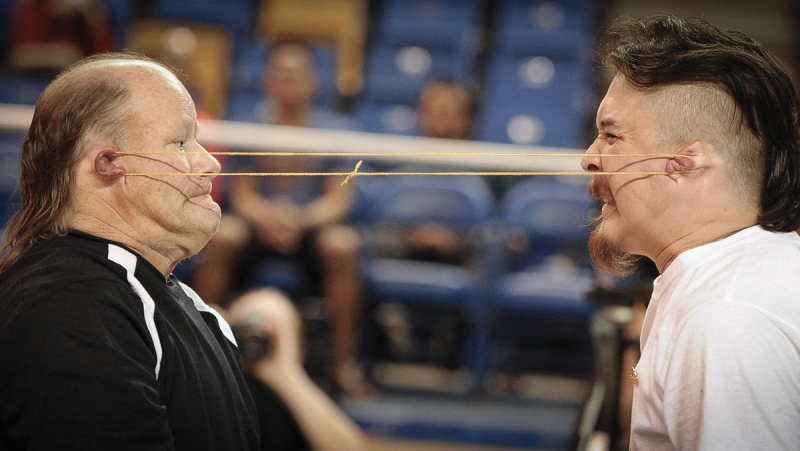
americanindianmagazine.org 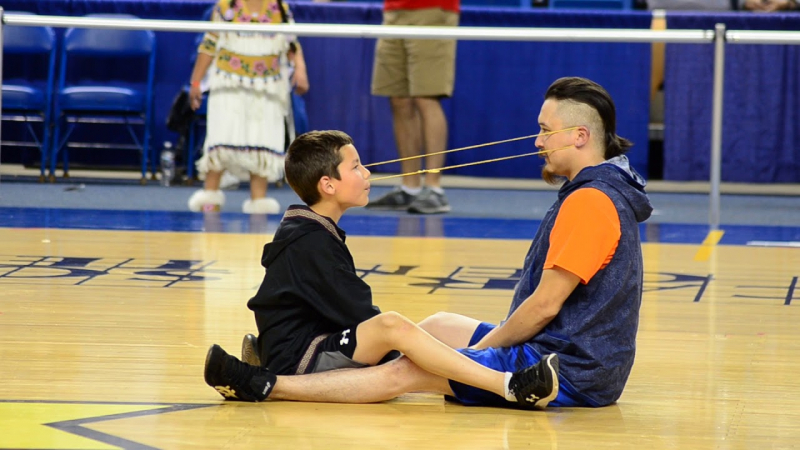
youtube.com -
The traditional horse game of kok boru is a synthesis of traditional practices, performances, and the game itself. It is a traditional game played by two teams on horseback in which players try to manoeuvre with a goat's carcass, or 'ulak,' and score by putting it into the opponents' goal. The bearer community includes players from higher league, semi-professional, and amateur teams, as well as the general public. The most experienced players serve as referees, while the 'Kalystar' (elders) ensure the game's fairness.
The element is an expression of its practitioners' cultural and historic tradition, as well as their spiritual identity, and it serves to unite communities regardless of social status, fostering a culture of teamwork, responsibility, and respect. Knowledge about the element is primarily transmitted naturally through demonstration, as well as during festive and social events, and the community concerned is actively involved in ensuring its viability through knowledge and skill transmission, research, and training organization. The National Kok-Boru Federation, founded in 1998, plays an important role in promoting and protecting the element through activity development and organization.
Location: central Asia
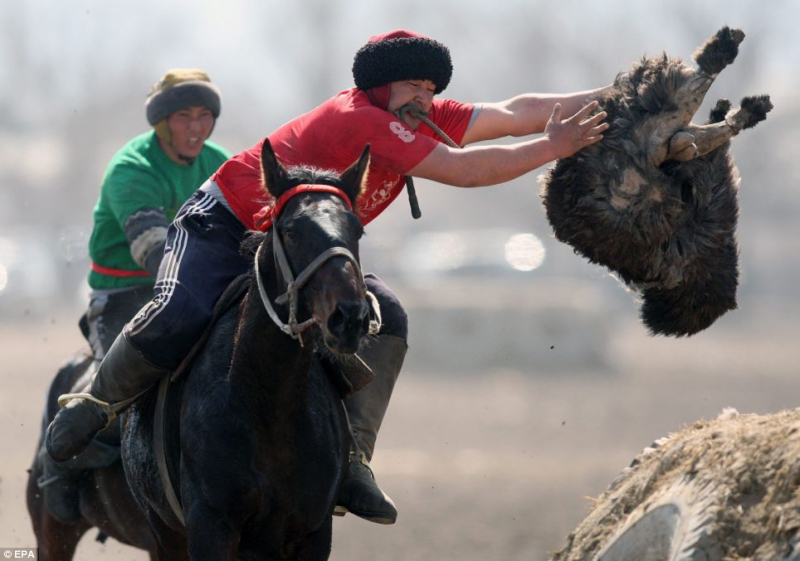
dailymail.co.uk 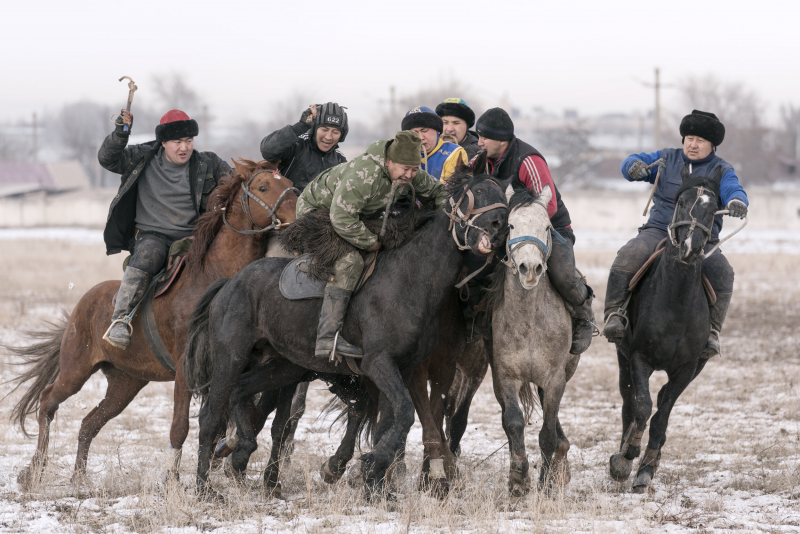
dailymail.co.uk -
The Calcio Storico ranks 8th in the list of the best bizarre sports you've never heard of. If the media refers to calcio storico as "the most brutal sport on earth," you can expect it to be brutal. That it does. This Italian game, which involves punching, head butting, and choking, dates back to the 16th century and is a cross between soccer and wrestling. Are there any guidelines? Some! You are not permitted to kick or sucker punch anyone. Aside from that, have at it. A ball is in play, and a goal can be reached to score points. The team of 27 that scores the most goals is clearly the winner. There is a referee, but the game is not kind to those who are hurt. The game will not stop if you need to be carried off the field. There are no player substitutions either.
Almost anything goes when it comes to annihilating your opponent. If you're a Muay Thai expert, for example, you're welcome to put your skills to use. Remember: no head kicks. Also, no collaborating. Fights must be one-on-one. Despite the fact that it is a game, things do become personal, because how could they not? Officials in Florence banned the game for a year in 2007 after the game devolved into an all-out brawl that resulted in 50 players being taken to court.Location: Piazza Santa Croce, Florence
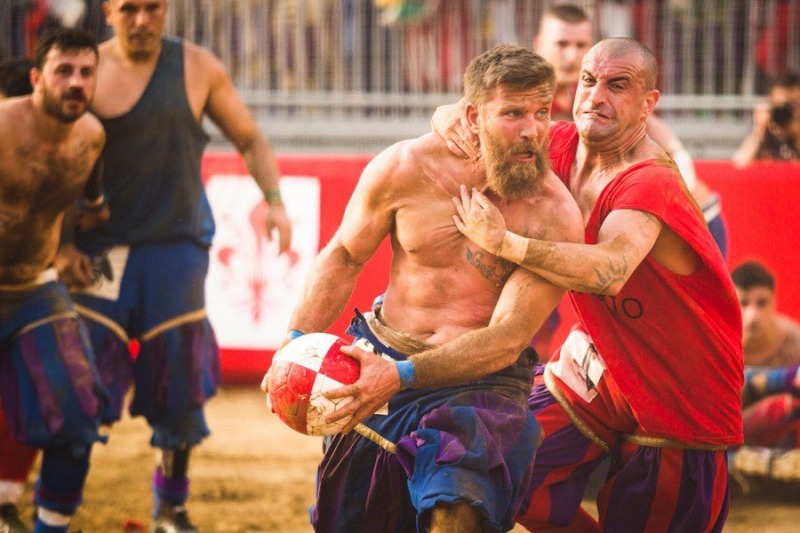
radseason.com 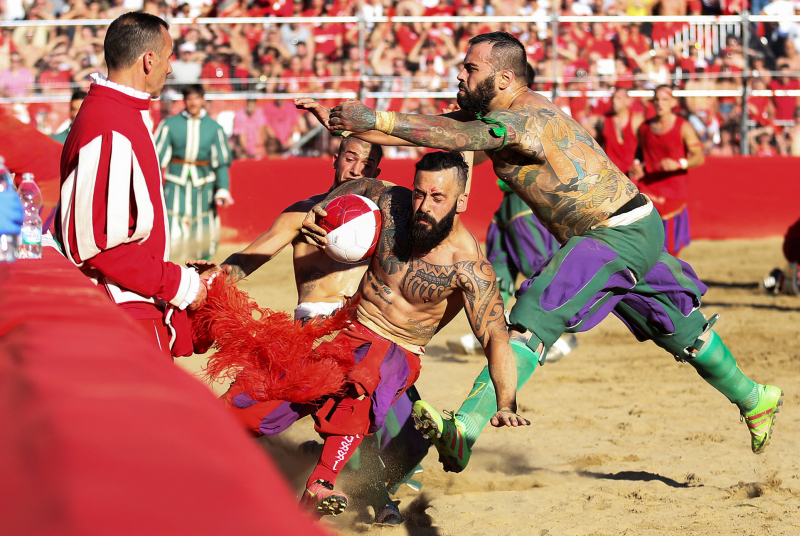
feelflorence.it -
The game will not stop if you need to be carried off the field. There are no player substitutions either. The pursuit of members of the opposite sex has been a major theme throughout human history. Historically, men have been pursuing, wooing, or even chasing women. And who knows, perhaps this is where the Kazakh tradition of Girl Chasing originated.
Unlike the romantic kind of chasing a girl, this one is frenetic and slightly terrifying because it involves literal horseback chasing. Kazakhs have historically been some of the world's best horsemen, and they invented stirrups. So "hunting" might be a better name. Nonetheless, this traditional game, also known as Kuuz Kuu, is part of Kazakh tradition and has been passed down through generations. A girl on horseback is pursued by boys on horseback in the game. It's similar to a race, with a predetermined finish line. The boys must catch the girl before she reaches the finish line. The benefit to her? She has a whip with which she can chase them. If a boy catches her, he will receive a kiss. If the girl escapes, she has the ability to whip them even more.
Location: Kazakhstan
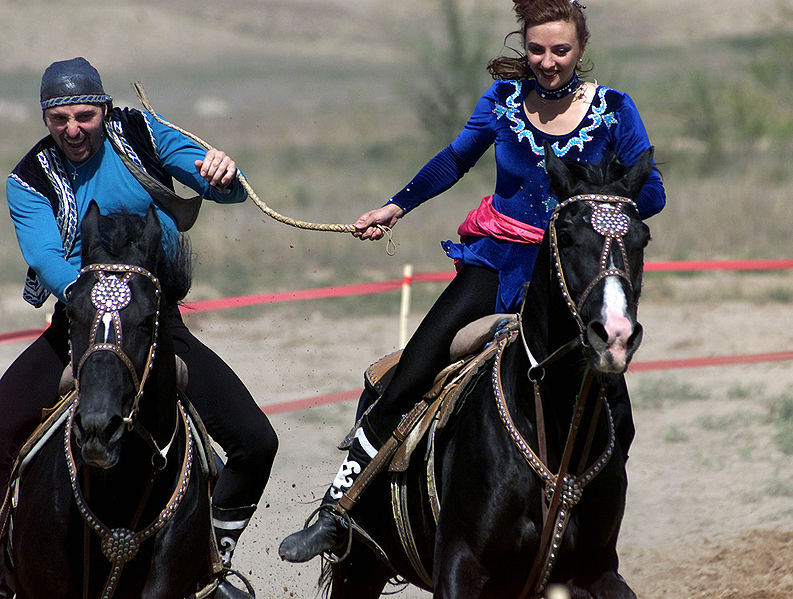
twitter.com 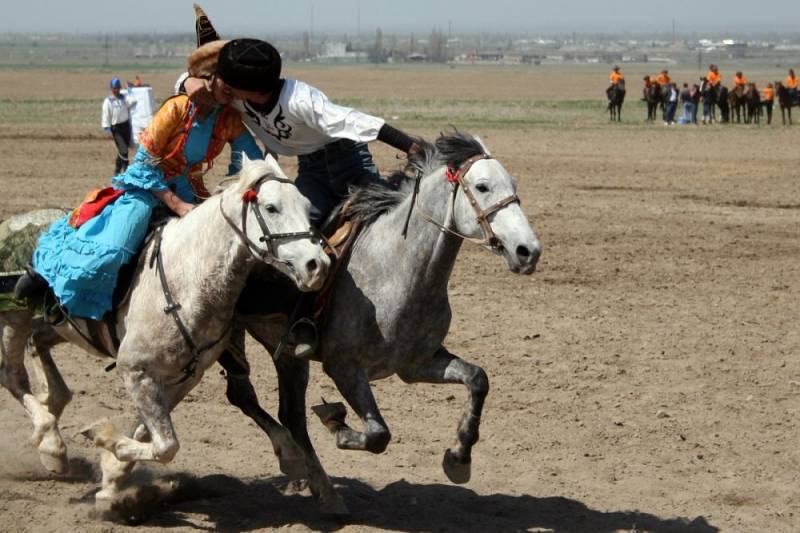
twitter.com -
Scott Mason, an award-winning bird trainer, invented parahawking, which is best defined as a mix of tandem paragliding and falconry. The concept arose as a method to enrich non-releasable rehabilitated raptors and to discover new ways to address vulture conservation problems in Nepal. The idea was there, a training program was created, and a brand-new adventure activity was born.
When parahawking, you fly with trained Egyptian Vultures, a truly unusual species of bird. Egyptian Vultures are not only extremely intelligent (they are one of only two bird species in the world that utilize tools to seek food (they will actually pick up and drop pebbles to break into eggs), but they are also extremely energy efficient. The vultures rely on heated pockets of air, known as thermals, for lift, allowing them to soar with little effort. The higher they fly, the broader their perspective gets, allowing them to find food more quickly. If there are no thermals, the Egyptian Vulture will perch on a tree and store energy until it is ready to try again. Egyptian Vultures are a fantastic bird to paraglide with because of their inherent attention to energy conservation, as gliders also rely on thermals to achieve lift. So, whenever you want to go up in a paraglider, just follow the birds
Location: Nepal
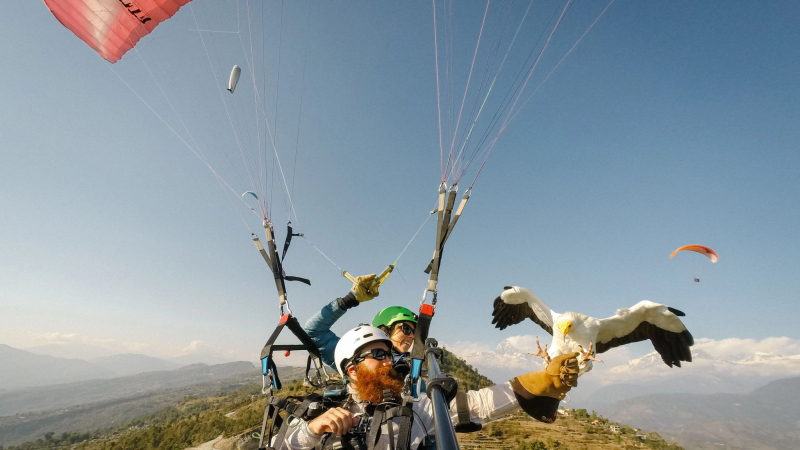
gizmodo.com.au 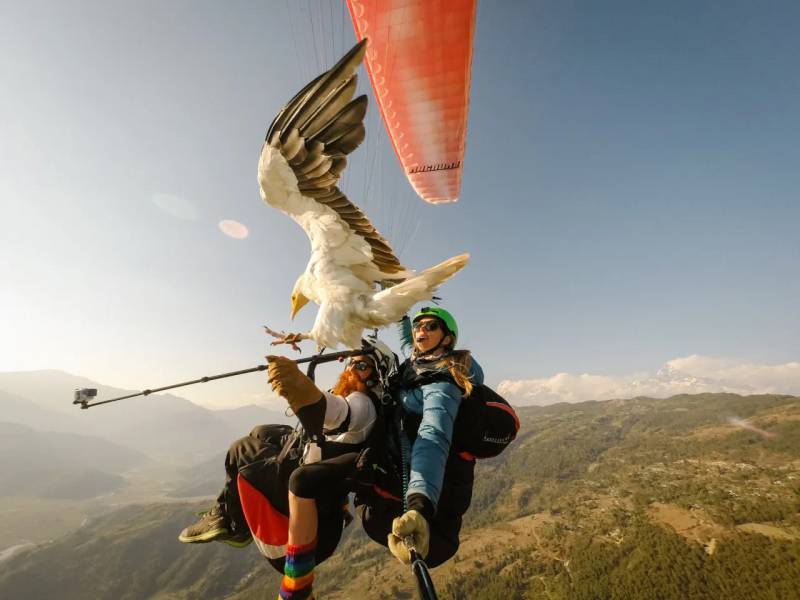
gizmodo.com.au































